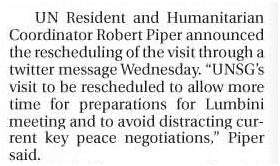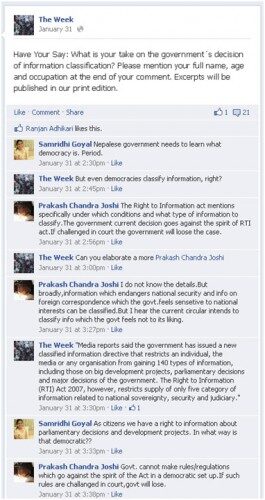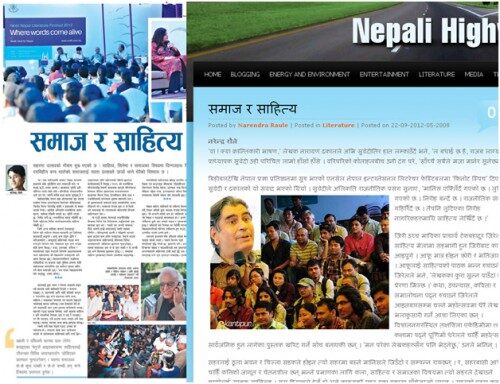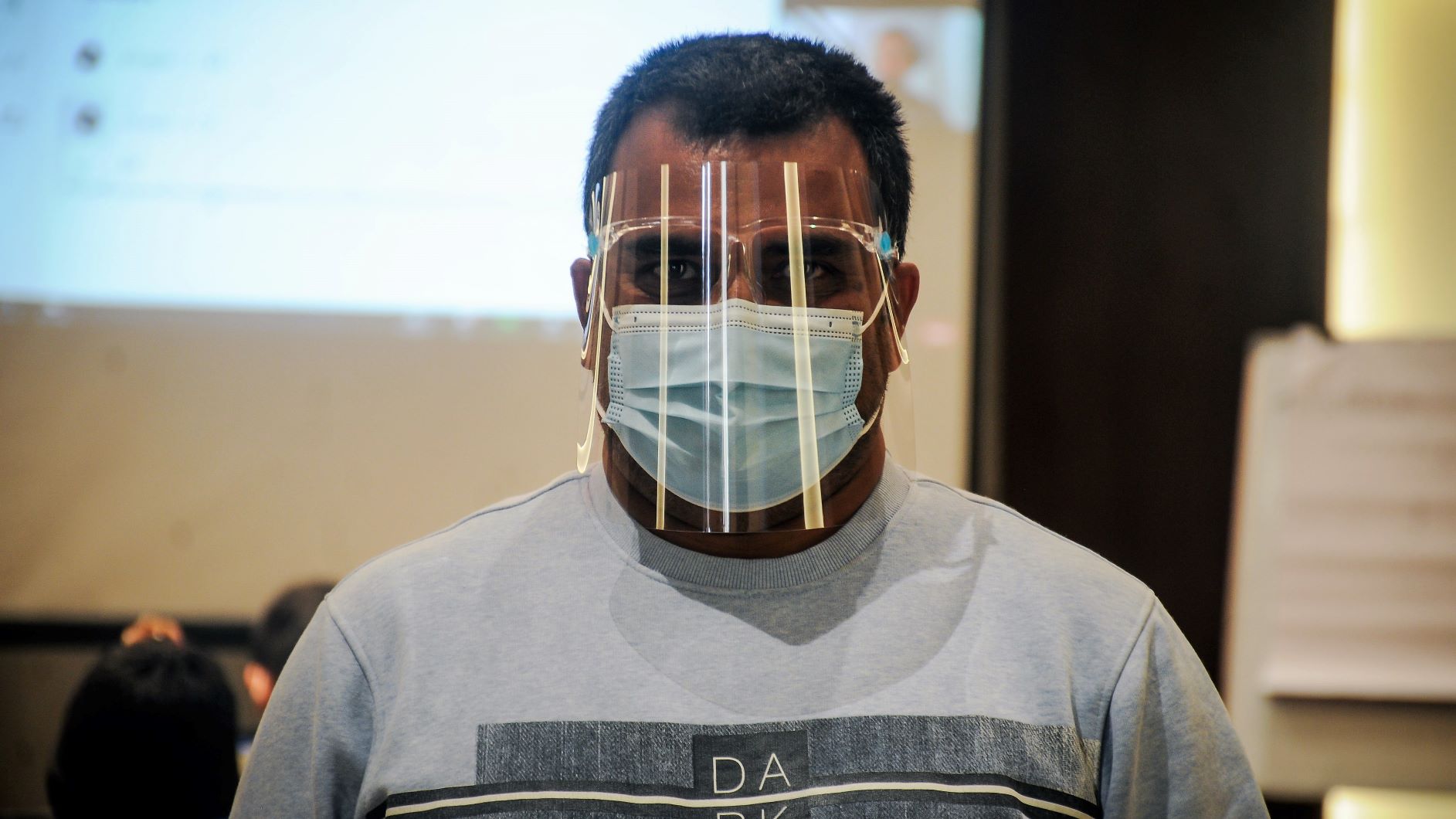(In October/November, 2012, I traveled around the country to train journalists on use of social media. The training, held by Equal Access Nepal and funded by UNDP’s project, was held in Biratnagar, Kathmandu, Pokhara, Dhangadhi & now I am in Nepalgunj. Each training lasted two days and included around 30 journalists. Here is one of the reading materials I wrote for the training. I will upload some others soon.)
Journalists can use social media to aid to their work as journalist and to improve their professional skills. Here are six things that journalists and their organizations can do with social media to aid to journalistic processes:
The six things discussed here are 1. Seek idea and information, 2. Cultivate sources, 3. Verify Information, 4. Publish / Distribute News, 5. Promote Write-ups / get feedback / measure popularity.
1. Seek ideas & information
UNSG’s visit to be rescheduled to allow more time for preparations for Lumbini meeting & to avoid distracting current key peace negotiations
— Robert Piper (@UN_Nepal) March 21, 2012
On March 21, 2012, UN’s Robert Piper tweeted that scheduled visit of UN General Secretary was postponed. Online news portals that day and newspapers next day, including Republica (shown below), used his tweet as the source.
 Social media can not only be used as source of information but also can be used to get an idea on issues and events.
Social media can not only be used as source of information but also can be used to get an idea on issues and events.
During the extended plenum of UCPN (Maoist), the party used Twitter (@UCPNMaoist) for public updates on what’s going on in the plenum. Though it’s one-sided information and not complete/concrete, it could give an idea on what’s going on or at least when to rush to the venue.
For official information and issuance of press releases, it’s easier if you follow organization’s social media profiles or that of those who are in higher position at the organizations.
If you follow people with strong opinions and knowledge on your beat, you are more likely to get peg for your next reporting. Remember, Twitter alone cannot be a complete source of information (except in some cases of breaking news like the one talked above) but it could be a tool to give you a lot of ideas for your work.
2. Cultivate Sources / Crowd source opinions
 On right, The Week of Republica uses Facebook profile to crowd-source opinions on government’s decision of information classification on January 31, 2012 (they have long stopped doing that from this particular account but still do it at www.facebook.com/gennextnepal).
On right, The Week of Republica uses Facebook profile to crowd-source opinions on government’s decision of information classification on January 31, 2012 (they have long stopped doing that from this particular account but still do it at www.facebook.com/gennextnepal).
The Week still does crowd-source opinion through Twitter asking publicly if someone has an opinion on the specific issue.
This is a good example of how social media can be used to cultivate sources and crowd source opinions.
However, to cultivate sources, its better that you befriend your potential sources (on Facebook) and follow your potential sources (on Twitter) and keep conversation even when you do not want to use them.
Like their posts, comment on their posts, retweet their tweets or reply to them just to keep the bond so when you require any information, they feel they are giving it out to a friend – rather than an unknown journalist.
Finding people who could be sources on your beat, keeping in touch with them and following what they are saying was never so easy both in terms of costs and time consumed.
On other thing that can be done on social media by crowd-sourcing is locating the right source of information. Ask people to provide you more information on specific topic, and ask them to provide you contact with right person with that information.
3. Verify Information
Verification of information you already have is normally done through asking people who may know the issue about the authenticity or asking the crowd if that was true.
4. Publish / Distribute / Archive News

On September 22, 2012, Narendra Raule wrote an article about Nepal Literature Festival on Koseli. The article was also available on his blog (the picture above shows the photo of article on newspaper and on his blog). Many journalists are using blogs to archive their news (caution: ensure with your organization that this is not a problem).
However, journalists are also increasingly using social media – especially blogs – to publish their stories and opinions.
What if the news you did for your paper do not get the space for some reason? Publish yourself. What if you are out of profession for a certain period of time? Publish it online (to keep yourself being identified as journalist and/or continue your engagement with issue/sources).
Social media is a medium of publication and distribution of news you may have (that may or may not have been published in your medium.
5. Promote Write-ups / Get feedback / Measure popularity
Social media has changed the way information is received. Audience increasingly get information through social media (in other words, information has to reach them) rather than any other way (they are decreasingly searching for information they don’t know).
This makes social media a must-tool for promotion of any published stories. On left, the screenshots show two journalists and two politicians promoting their write-ups.
Journalists can receive feedback on write-up through replies on Twitter and comments on Facebook. A story not shared on social media is more likely to end up without any feedback to the journalist but a story shared on social media is surely to draw some feedback.
The retweets and favorites received on Twitter and the likes/comments received on Facebook/YouTube also measures the popularity of the write-up.
Three Ways to Share:
1. Share headline & link (ok method): as used by many news organizations in their Facebook page; Gagan Thapa in an example here. It could draw people to click on the link and get to the story.
‘??????????’ ?? ????????? ????? ???????? | ?????/????????? |ekantipur.com/nep/2069/6/8/f…
— Gagan Thapa (@thapagk) September 24, 2012
2. Personalize with ‘my’ (good method): as used by Narayan Wagle. When personalized using ‘my’ or ‘please’ or ‘request to read’, it’s more likely to get attention (after all social media is social). But be sure to give an idea of what it’s about. Instead of saying ‘read my article’, say ‘read my article about Kathmandu’s garbage problem’ is better.
My take on govn’s self centered decision to honor ramarajabit.ly/RAl0Gb
— narayan wagle (@narayanwagle) September 20, 2012
3. Ask for action (excellent method): as used by Kunda Dixit. Ask your audience (who are your circle of friends) to act either my doing something or giving opinion. If Narayan Wagle had tweeted ‘My take on govn’s self-centered decision to honor ramaraja bit.ly/RAloGb What you think? Am I right?’, it’s more likely to generate conversation.
If you read these stories about Pushpa Basnetnepalitimes.com/issue/2011/09/… andnepalitimes.com.np/issue/2006/01/…, you will vote on CNN Heroes to encourage her.
— Kunda Dixit (@kundadixit) September 22, 2012
Download the PDF version that was distributed during the training here: How can journalists use social media. The accompanying presentation is here.

